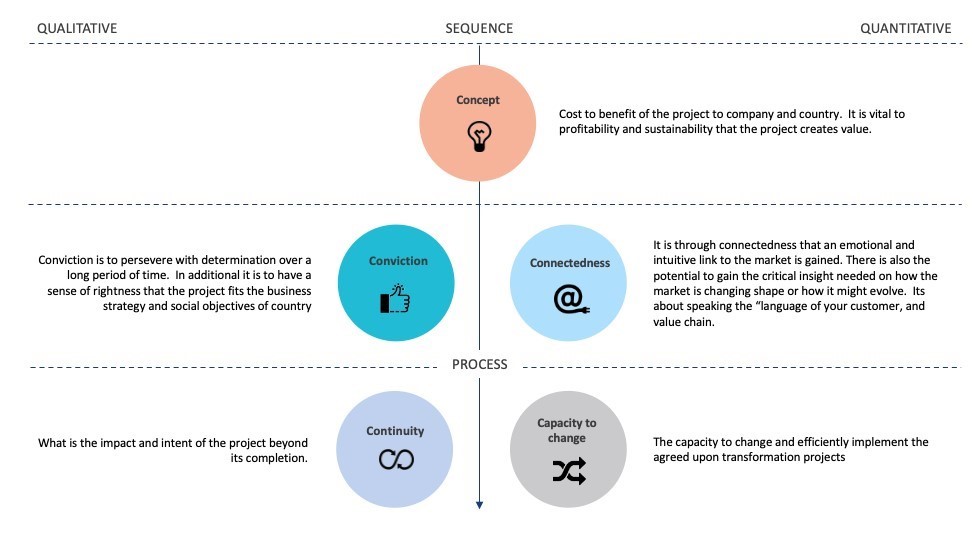[Part 4] The Role of the BEE Champion During a Global Pandemic: A Four Part Series
By Robin Woolley | 13 May 2021
Part 4: Getting the biggest social impact from your BEE budget.
Under the current economic climate, it is difficult for companies to commit funding to large projects that support their BEE level without being clear on either the return from these projects, or if these projects are the best practice option for the company. Part 4 of our series seeks to pose a number of key questions BEE champions should be asking in these extraordinary times.
Return on investment
Do you know what impact and return on investment your current BEE Plan is yielding your business and the country? Are you wanting to test and validate the effectiveness of your current BEE plan? If not we suggest you need to
- understand and quantify the impact of your BEE plan on your business and on the country;
- identify the lower impact initiatives and
- review these against best practice to ensure your BEE plan supports your business strategy
The model below suggests the types of questions you should be asking of each of your BEE projects:

Below, we use the common project concept of the BEE learnership programme that is hosted outside the lead employers' workplace to illustrate the above questions, which could and should be applied to all BEE projects. While the learnerships in the narrative below are painted in a somewhat negative light, this is not necessarily true of learnerships in general. Instead, the narratives demonstrate how corporates sometimes approach the learnership project and serve as a mini-case study, not of the effectiveness of learnerships, but the types of questions a BEE champion should be asking to improve the quality of your learnership programs.
Testing the CONCEPT: If you are not able to nutshell the concept inherent in the project and how this will drive cost to benefit to the country, you might be caught in doing BEE projects for scorecard sake and not improving business and social impact. For example, many BEE champions are familiar with the multiple contributions learnerships undertaken with persons with disabilities can have on the scorecard (link to REALISE Webinar/ training article). As a result, companies undertake these learnerships sometimes and learners are hosted in a different host employer as they tick the box on:
- high scorecard contribution at low cost
- with the multiple rebates that companies can access in this regard.
These learners are then “re-tredded” each year sometimes doing learnerships for 3 or 4 years. Corporates start treating them as “professional” learners instead of the learnership as “a launching pad into some work-based experience and ultimately obtaining a permanent job”. As a BEE champion, you should understand the concept in the project and hold all stakeholders accountable to that concept: if learnerships should improve employability how is that concept tested and outcome measured?
Establishing the CONVICTION: Are all the stakeholders aligned and have skin in the game so that we all walk this road together “no-matter-what”? If we continue to use the example of learnerships, the danger is that if the lead or host employer has no plan to integrate the learner into their or any other workplace, even if the learner is doing their bit, then not only do they lose the 5 bonus points bit we have to ask ourselves why we are doing this? The host employer might argue: “well it’s a free resource for a year”; but then, what’s their skin in the game to ensure the learner is well utilized and improves in employability over the year? It is vital for the success of the project to establish how committed all the stakeholders are, and how is this commitment measured?
Establishing the CONNECTEDNESS: Does your BEE project reduce social distance and enable improved connectedness and access between stakeholders? Learners that are “seen and not heard” or sometimes not even seen are unlikely to build relationships that can lead to employment. In other words, are you meeting your learners and exposing them to your internal stakeholders and how are they being mentored?
Establishing the CONTINUITY: Projects that have a defined life-cycle and there is no thought or follow through on what the projects need to deliver in terms of outcomes and social change beyond the project have the risk of dissipating their impact once completed. So in the instance of learnerships, how are you working with your learners to prepare their CV’s, to hone their interview skills and move them into higher visibility with prospective employers? Not just for your bonus points but for transformations' sake? What’s the life beyond the project?
Establishing the capacity to change: a related question BEE champions should be asking in these times is “are you correctly resourced to implement these projects in terms of internal capacity and chosen external partners?” Is your BEE consultant or BEE advisor agnostic and bringing in the best external partners? What is 'insourced' and what is outsourced is a key question to ensure the project as the best implementation process. Are you using project management principals, and tools to:
- Determine milestones and project GANTT charts
- Effectively identify; assess and manage risks
- Effectively manage pillar champions and committees
- Allocation of tasks and responsibilities and process inter-relationships
- Tools for monitoring; controlling and reporting
- Stakeholder engagement tools
Would you like to learn more about how you can get the most out of your current BEE budget? Our team of experienced BEE advisors can help you build and implement strategies that:
- - Experience transformation on the ground
- Take a practical approach to your BEE Business Strategy
- Achieve best practice
- Realise the value you expect

Robin Woolley
Recent posts like this:
Transformation News, BEE Ownership
3 min read
Transformation News, BEE Ownership
3 min read
